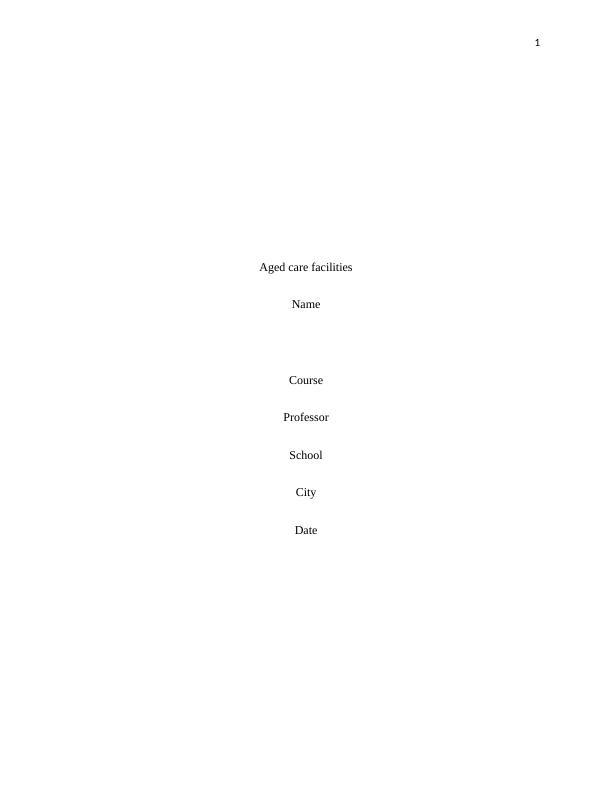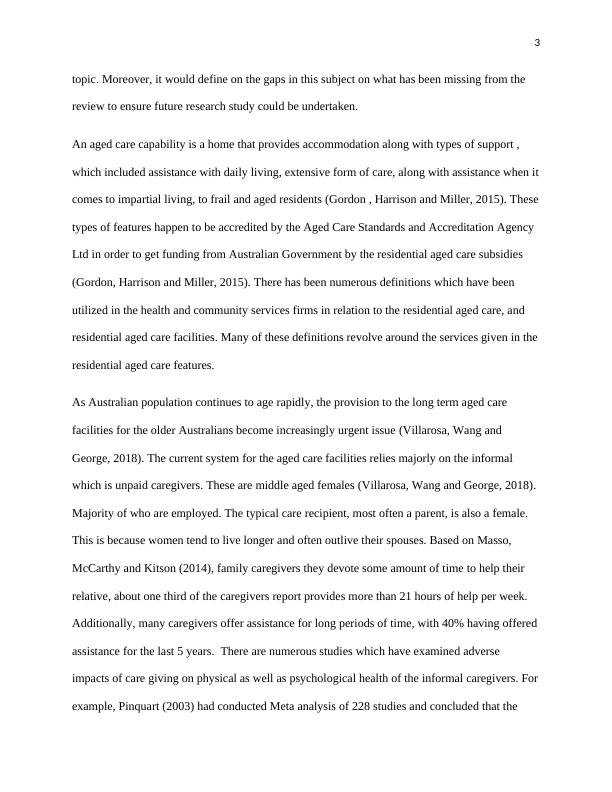Aged Care Facilities: Literature Review and Research Gaps
Write an email response to a client representative, demonstrating appropriate tone, content, email etiquette, and effective language.
8 Pages2352 Words153 Views
Added on 2023-06-08
About This Document
This literature review evaluates the subject of aged care facilities, highlighting research gaps and future research opportunities. It discusses the quality of life problems of the aged care facilities for the elders and the importance of promoting aged care facilities. The review also identifies the resources of the previous research within this topic.
Aged Care Facilities: Literature Review and Research Gaps
Write an email response to a client representative, demonstrating appropriate tone, content, email etiquette, and effective language.
Added on 2023-06-08
ShareRelated Documents
End of preview
Want to access all the pages? Upload your documents or become a member.
Aged Care Disability Case Study 2022
|10
|2857
|22
Developing an Aged Care Strategy: Tools and Techniques
|7
|1877
|496
Healthcare System - Assignment
|5
|1092
|50
Comprehensive Health Strategies: Industry Sector Analysis of Aged Care Services in Australia
|14
|3431
|85
Analytical Report on Palliative Care in Residential Aged Care Settings
|15
|4132
|423
Primary Health Care (PHC) For Australian Elderly
|10
|3021
|84



